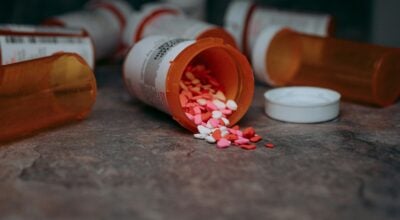Thumbs Up, Thumbs Down: Aug. 23
Published 4:21 pm Wednesday, August 24, 2016
Thumbs down — radon risk in Boyle
Boyle County is one of 15 counties that University of Kentucky researchers recently created risk maps for, showing where people are most at risk for exposure to radon.
While Boyle is not part of a bright red ring of risk in western Kentucky, it still has some areas in the “more danger” category — the fourth-highest of five categories listed.
Eastern Boyle County especially falls into the “more danger” category, while western Boyle has much more land listed in the “danger” and “mild danger” categories.
The radon-risk maps were created by a collaborative group of health researchers and geologists who call their effort BREATHE — Bridging Research Efforts and Advocacy Toward Healthy Environments.
Radon is a radioactive gas that comes from underground rock formations and can seep through basements and foundations into structures, where it can become trapped. Radon can cause cancer — in fact it is the second leading cause of lung cancer behind cigarettes, according to Kentucky Health News. The gas also has a compounding effect with cigarette smoke — smokers’ risks of cancer are increased by exposure to radon.
This is potentially bad news for smokers on the east side of Boyle County, but there are ways to test your home and workplace for radon, as well as methods for removing radon if it turns out you are in a hot spot.
Even though it’s scary, it’s good that researchers looked into this and provided their maps to the public. It’s raising awareness about radon, which will help more people take advantage of free testing that’s available and possibly avoid long-term exposure to radon.
For more information about radon testing, call the Boyle County Health Department at (859) 236-2053 or visit the Kentucky Cabinet for Health and Family Services radon testing information page at bit.ly/2bn2Lbo.
Thumbs up — naloxone available for students
Boyle County and Danville schools will soon have naloxone kits available for use if a student overdoses on an opioid such as heroin.
School officials will be attending a training event in Louisville next month and then both districts plan on having the kits available. Naloxone is an opioid blocker that can be given to someone after they overdose on an opioid. It can bring them back when they would otherwise have died.
Among other things, school officials will be trained on how to administer naloxone, how to identify an overdose and Kentucky’s Good Samaritan Law that protects people helping an overdose victim from facing drug charges.
It’s a tough thing to talk about because no one likes the idea of a kid using a hard drug like heroin. It’s also unlikely that these kits will have to be used, which is a good thing.
But the difficult topic and the unlikelihood of use should not — and have not — stopped school administrators from taking steps to do something just in case the worst-case scenario happens.
Students make mistakes. Some of them make worse mistakes than others, but all of them are still just kids and have a lot to learn. No one should have to lose their life because of a choice they made at 15 years old.
We hope we don’t, but if we ever have to report on a story about a high school student — or even a middle school student — overdosing on heroin at school, we’re glad there’s a chance the headline will read “student’s life saved” rather than “one dead.”






